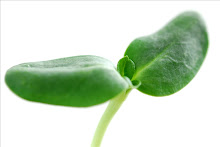5 Steps to Less Waste, courtesy of Stonyfield Organic.
- Get a battery recharger. Americans buy roughly three billion dry-cell (AA, AAA, C, D, 9-volt) batteries a year, the majority for one-time use. Use a rechargeable battery and you can prevent hundreds of single-use ones from entering landfills.
- Use cloth towels and napkins. If just one family of four switched to cloth napkins at each meal for one year, this green step would prevent 4,380 paper napkins from ending up in the trash.
- Compost. Food and garden scraps make up 24 percent of the municipal solid waste stream. Put these and other biodegradable materials - newspaper, paper bags, autumn leaves - to better use in the compost bin. [note: I LOVE my countertop compost bin and have found that there is a 30-50 percent reduction in our weekly trash can. Then again, I live in Berkeley and am extremely fortunate to the option of curb side compost collecting.]
- Avoid excess packaging. Product packaging accounts for one-third of trash thrown away, and 15 percent of that comes from consumer items. Buy items in bulk (as opposed to individually wrapped) whenever possible, since bulk items often use less packaging. Get in the habit of asking yourself, "Is the product I'm about to buy worth the eco costs of the packaging it comes in?"
- Reject junk mail. Those catalogs, pre-approved credit card letters, and sales announcements that arrive in your mailbox create four million (got that? FOUR MILLION) tons of waste each year. Just a days worth of our collective junk mail could heat 250,000 homes. Take your name off junk mailing lists at mailstopper.tonic.com. [note: there is a $20/year fee for this service].
If you are not able to buy items in bulk or pay a $20/yr. fee to stop the mail you don't need then be sure to use your recycling bin. Many of the catalogs, sales announcements, and excess packing you end up with can be tossed straight into the recycling bin. By practicing a bit of mindfulness in deciding where you toss your trash, what you buy, and how you use your products you can make a large impact overall.











